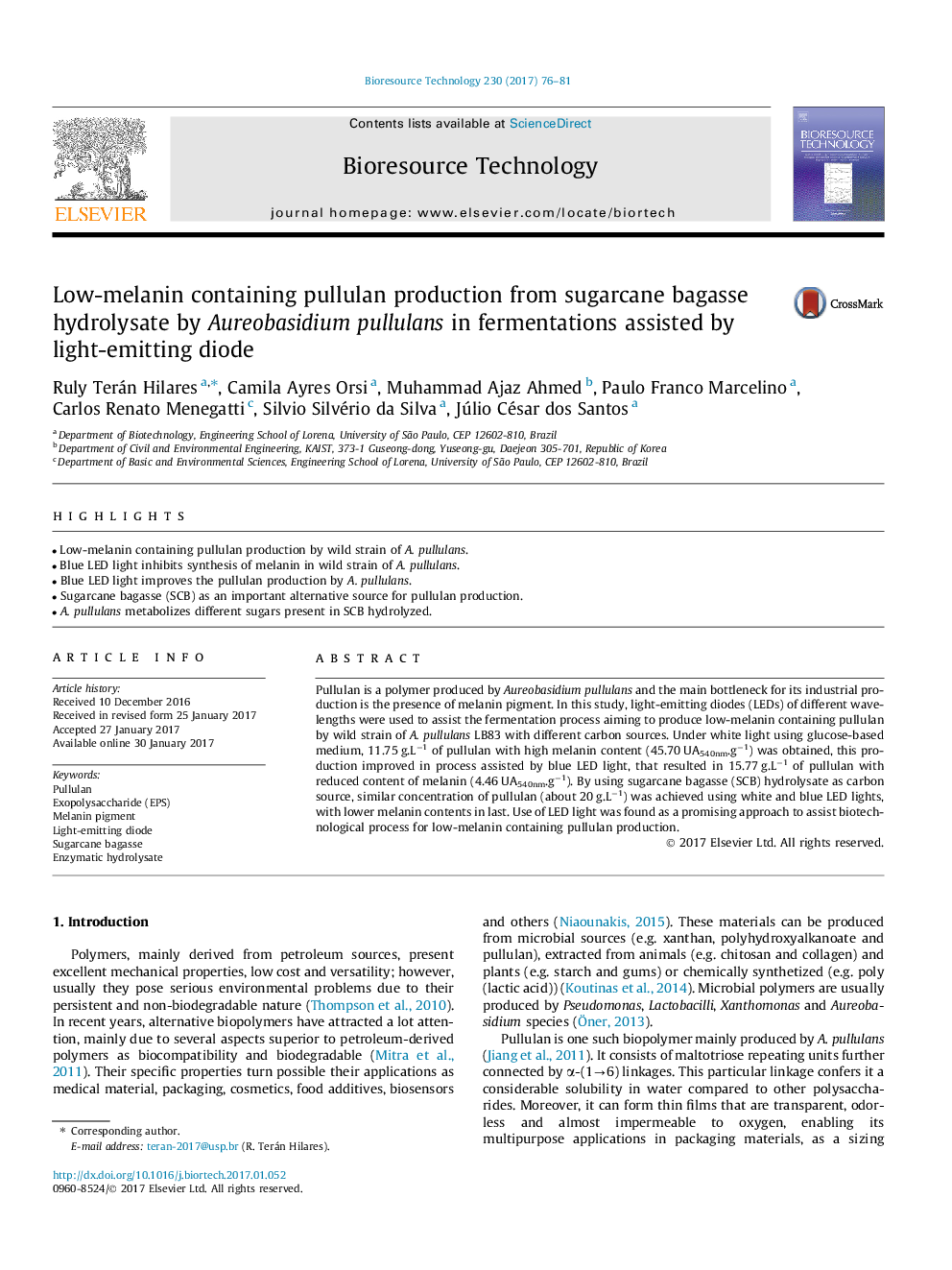| Article ID | Journal | Published Year | Pages | File Type |
|---|---|---|---|---|
| 4997473 | Bioresource Technology | 2017 | 6 Pages |
Abstract
Pullulan is a polymer produced by Aureobasidium pullulans and the main bottleneck for its industrial production is the presence of melanin pigment. In this study, light-emitting diodes (LEDs) of different wavelengths were used to assist the fermentation process aiming to produce low-melanin containing pullulan by wild strain of A. pullulans LB83 with different carbon sources. Under white light using glucose-based medium, 11.75Â g.Lâ1 of pullulan with high melanin content (45.70Â UA540nm.gâ1) was obtained, this production improved in process assisted by blue LED light, that resulted in 15.77Â g.Lâ1 of pullulan with reduced content of melanin (4.46Â UA540nm.gâ1). By using sugarcane bagasse (SCB) hydrolysate as carbon source, similar concentration of pullulan (about 20Â g.Lâ1) was achieved using white and blue LED lights, with lower melanin contents in last. Use of LED light was found as a promising approach to assist biotechnological process for low-melanin containing pullulan production.
Keywords
Related Topics
Physical Sciences and Engineering
Chemical Engineering
Process Chemistry and Technology
Authors
Ruly Terán Hilares, Camila Ayres Orsi, Muhammad Ajaz Ahmed, Paulo Franco Marcelino, Carlos Renato Menegatti, Silvio Silvério da Silva, Júlio César dos Santos,
